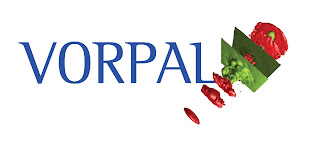Vorpal v3.0 from Tech-X for Plasma Simulations
 Tech-X Corporation has released Vorpal v3.0, which is a software framework that enables plasma simulations composed of particles and fluids for 1D, 2D, and 3D geometries.
Tech-X Corporation has released Vorpal v3.0, which is a software framework that enables plasma simulations composed of particles and fluids for 1D, 2D, and 3D geometries.Boulder, CO based Tech-X Corporation was founded in 1994 by John R. Cary, CEO and Professor of Physics at the University of Colorado and Svetlana Shasharina, Ph.D. and Vice-President of Distributed Technologies. The company combines object-oriented software, distributed technologies, simulation and modeling, and massively parallel computing expertise to assist customers in solving the most difficult scientific problems.
VORPAL enables researchers to simulate complex physical phenomena in less time and at a much lower cost than empirically testing process changes for plasma and vapor deposition processes. VORPAL offers a unique combination of physical models to cover the entire range of plasma simulation problems. Laser wakefield accelerators, plasma thrusters, high-power microwave guides, and plasma processing chambers are a few of the many applications benefiting from the powerful, parallel algorithms incorporated into the VORPAL framework. Ionization and neutral gas models enable VORPAL to bridge the gap between plasma and neutral flow physics.
The software runs on a wide range of computing platforms, from desktop machines to massively parallel supercomputers with thousands of processors. The use of standard data formats allows data analysis at various levels of sophistication, including your own preferred data analysis tool.
New capabilities in its latest version will allow researchers to apply Vorpal in new application areas and enable more advanced simulations of the physics being studied. These include a graphical user interface for input file creation/validation, support for non-uniform and non-Cartesian coordinate grids, new, improved computational techniques, better post-processing support, and improved diagnostics and documentation.
 VORPAL simulation of an electron beam propagating in the superconducting Tesla cavity. Particle color (and diameter) represents the transverse energy. The isosurfaces represent the longitudinal electric field. [Image courtesy: Tech-X]
VORPAL simulation of an electron beam propagating in the superconducting Tesla cavity. Particle color (and diameter) represents the transverse energy. The isosurfaces represent the longitudinal electric field. [Image courtesy: Tech-X]The kinetic plasma model incorporated in VORPAL is based on the particle-in-cell (PIC) algorithm both in the electromagnetic and electrostatic limit. In the electromagnetic case, a charge conserving current deposition algorithm enables the integration of Maxwell's equations without any additional divergence cleaning. In the electrostatic limit, Poisson's equation is solved at every timestep based on the instantaneous charge distribution. The plasma can be confined in arbitrary shaped structures for particles and fields, including conductors, particle absorbers, reflectors, and many more. The computational domain can be periodic or mimic infinity via perfectly matched layer boundary conditions.
For details, visit VORPAL webpage.



